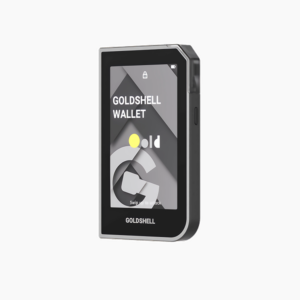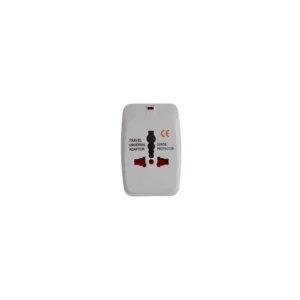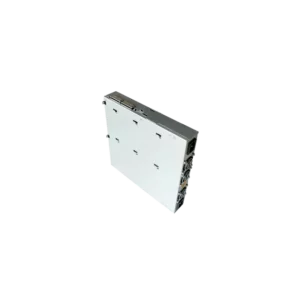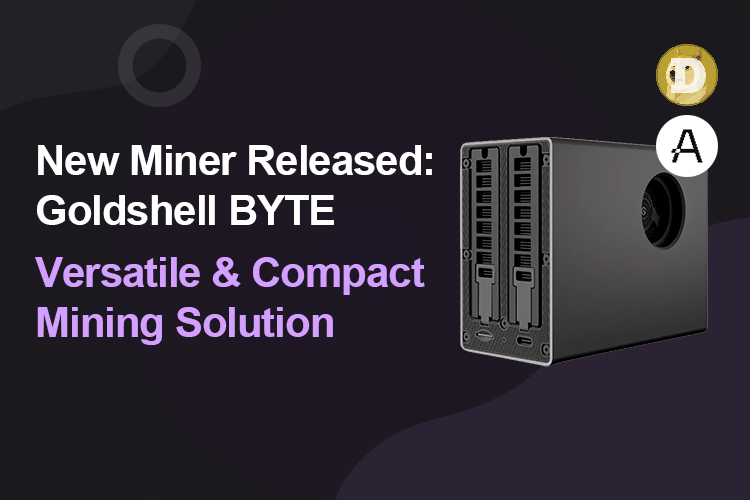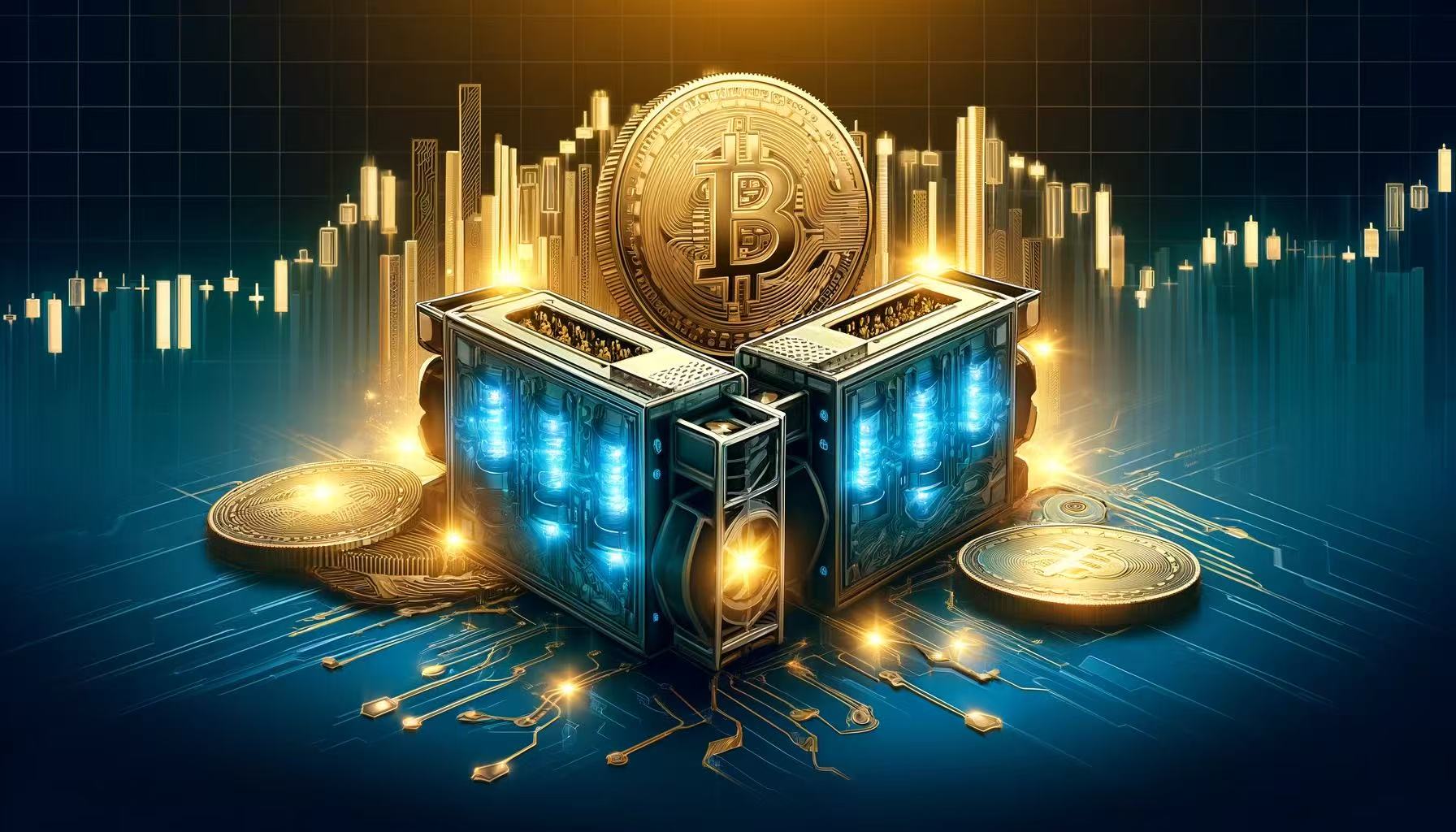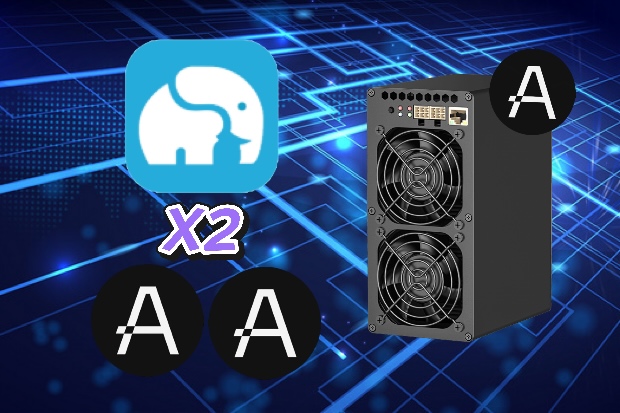Table of Contents
- Introduction
- What Is Bitcoin Blockchain?
- How Does Bitcoin Work?
- The Basics Of Bitcoin Mining
- Benefits of Bitcoin
- Optimizing Your Bitcoin Mining Setup: Choosing the Right Hardware
- Specific ASIC Miners We Recommend
- Bitmain's S21 series
- Bitdeer's SealMiner A2
- Choose From Trustworthy Crypto Exchange Platforms
- Which Mining Pool To Pick For Crypto Beginners?
- The Future Outlook Of Bitcoin Price
- Conclusion

12/10/2024
0 Comments
Introduction
Bitcoin has become a household name in modern discussions and has evolved into a widely recognized digital asset. Out of beginner curiosity, what is Bitcoin, and how does it work? In this article, we will explore the basic concepts of Bitcoin mining and Bitcoin blockchain. Ever since its creation, bitcoin transactions are recorded on a public ledger called the blockchain, ensuring security, and transparency for cryptocurrency holders.
What Is Bitcoin Blockchain?
Bitcoin is a decentralized digital currency created in 2008 by an anonymous individual or group known as Satoshi Nakamoto. Unlike traditional currencies, Bitcoin operates without a central authority, relying instead on a peer-to-peer network that utilizes blockchain technology for security and transparency. The nature of Bitcoin is decentralized offering more freedom by allowing individuals to transact directly without the need for banks. In the first place, Bitcoin was created to combat inflation and preserve its value, unlike fiat currencies that are vulnerable to inflation. Since there is no central authority controlling its transactions, Bitcoin transactions and creation are managed through an intricate system of digital ledgers, known as blockchain. Similar to the nature of gold, bitcoin is often used as an inflation hedge for most investors. It is impossible to alter a single Bitcoin block because each one is linked to the block before it. This connection ensures the security of every block over time. Such properties of the Bitcoin blockchain ensure that once a transaction is recorded on the Bitcoin blockchain, it is permanent. Essentially, distributed ledger technology (DLT) empowers decentralized data storage across multiple nodes to be Impenetrable against cyber attacks.
How Does Bitcoin Work?
The Basics Of Bitcoin Mining
Bitcoin mining is the backbone of the Bitcoin network, upholding the Bitcoin network’s security, validating transactions, and ensuring its functionality. It involves validating transactions and generating new bitcoins. Crypto miners typically have to use specialized and power-intensive ASIC miners to solve complex problems. Whoever is the first to solve super complex mathematical puzzles, gets an opportunity to add a new block of transactions to the blockchain and is rewarded with newly hashed bitcoins and transaction fees. The process fulfills two goals: verifying transactions and harvesting new circulating bitcoins. This process of validating Bitcoin transactions is often referred to as a proof of work consensus mechanism. As more miners join the competition to search for Bitcoin, the computational challenge, in the form of a hash, increases to mine one single Bitcoin. Originally, bitcoin mining was programmed to maintain a consistent rate of block creation, which is typically about every 10 minutes in the case of Bitcoin. This dynamic mechanism ensures the stability and security of the network. The algorithm adjusts the difficulty of mining based on the number of miners in the network. Here is an interesting fact, bitcoin has a finite supply of 21 million coins to prevent inflation. This is expected at around 2041 when the last bitcoin is mined, miners will earn money solely from transaction fees. This sophisticated mechanism not only regulates Bitcoin’s supply but also replaces traditional financial intermediaries with a decentralized, transparent system that guarantees secure, independent transaction validation. This absolute scarcity and its digital nature create what some call “digital gold.”
Read more about this in our article on Dogecoin Mining.
Benefits of Bitcoin
Blockchain technology ensures transaction security, with every action recorded transparently and permanently. This Bitcoin mining system ensures anonymity for everyone participating in the transaction. This adds a layer of protection for users to keep personal information private. Bitcoin is appealing for cross-border payments due to its lower transaction fees when compared to traditional banking. On the other hand, Bitcoin is accessible to anyone with an internet connection, making it a currency that can be used globally, without borders. Unlike traditional payment options when wired remittances are subject to high service fees and volatile exchange rates, bitcoin acts as a store of value and medium of exchange for the majority of crypto investors. Finally, Bitcoin’s mining process ensures fair distribution and system security, as miners validate transactions and contribute to network stability. As Bitcoin gains in liquidity, governments in El Salvador have recently adopted Bitcoin as the new legal tender.
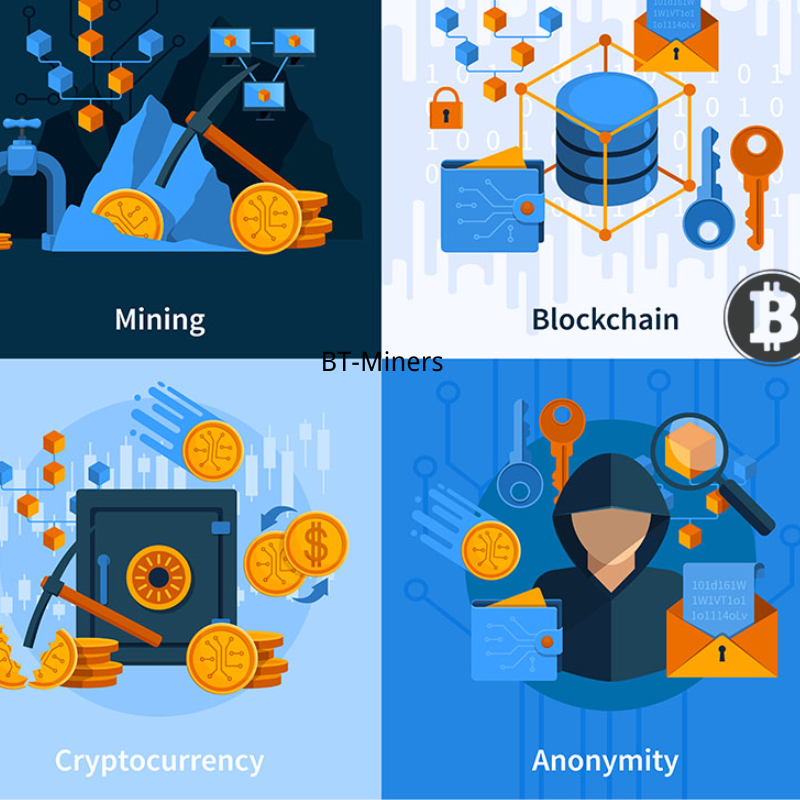
Optimizing Your Bitcoin Mining Setup: Choosing the Right Hardware
Specific ASIC Miners We Recommend
The advancement in ASIC miner cannot be ignored. In the upcoming 2025, As manufacturers adopt smaller and more efficient semiconductor nodes, ASIC technology will improve, leading to higher hash rates and lower energy consumption. For example, Bitmain’s S21 series miners already leverage TSMC‘s state-of-the-art sub-5nm chip technology, enabling superior computational power and improved energy efficiency, setting a benchmark for future mining hardware. Currently, as technology keeps improving, cooling systems are essential to maintain optimal temperature for ASICS miners. Hydrocooling is the innovation frontier for mining rigs, offering a higher cooling capacity when compared to air cooling. An efficient cooling system will better protect the ASIC board from damage. There are some signature ASICS miners worth noting:
In the cryptocurrency mining hardware market, two standout performers are listed as following:
Bitmain’s S21 series
The Bitmain Antminer S21 lineup consists of four distinct models: the S21, S21+, S21 Pro, and S21 XP, with price points varying from $3,500 to $7,200.Each model comes with its own unique specifications, such as power efficiency ranging from 13.5W/Th to 17.5W/Th, illustrating Bit Main’s commitment to high-quality mining standards. In terms of return on investment (ROI), these miners are designed to deliver a noteworthy 17.7-month ROI when the cryptocurrency price is at $95,200. This significant ROI figure highlights the potential profitability of investing in Bitmain’s Antminer S21 series, making them a compelling choice for those looking to enter the cryptocurrency mining space.
Bitdeer’s SealMiner A2
Competing closely, Bitdeer’s SealMiner A2 is priced at $3,899. It delivers a 226T hash rate with 16.5W/Th efficiency. Its ROI matches the S21 series at approximately 23 months, assuming a 7-cent per kWh electricity cost. The S21 series is set for pre-order, with shipping expected in Q1 2025, positioning both manufacturers as key players in the next generation of energy-efficient crypto-mining hardware.
Another option is to purchase a functional second-hand miner, making it the most cost-effective choice for first-time owners without spending a fortune. However, there are certain technical risks involved. There are several things to consider before buying a mining rig. First, inspect the miner for wear and tear, test its performance if possible, and ensure it has a decent lifespan. Be cautious of scams or equipment used in poor conditions.
For first-time buyers choose second-hand miners. We highly recommend the Bitmain Antminer S19 series, including models like the S19, S19j Pro, S19 Pro, and S19 XP, with prices ranging from $300 to $1,000. Choosing a trustworthy seller is crucial when buying used mining machines. With years of experience in the field, BT-Miners offers expert advice and has a professional repair team to guide you in selecting reliable used mining equipment.
Choose From Trustworthy Crypto Exchange Platforms
Similar to a broker, crypto exchange platforms offer the right instrument for trading your cryptocurrencies. A good resource to look through for cryptocurrency beginners would be CoinGecko. They typically have compiled a list of reliable cryptocurrency spot exchanges. You will find legitimate cryptocurrency platforms ranked by traffic, liquidity, trading volume, and legitimacy. Binance and Coinbase are two top-notch platforms that cater to both new and experienced traders, offering a range of tools, security features, and resources to help users navigate the crypto market with confidence.
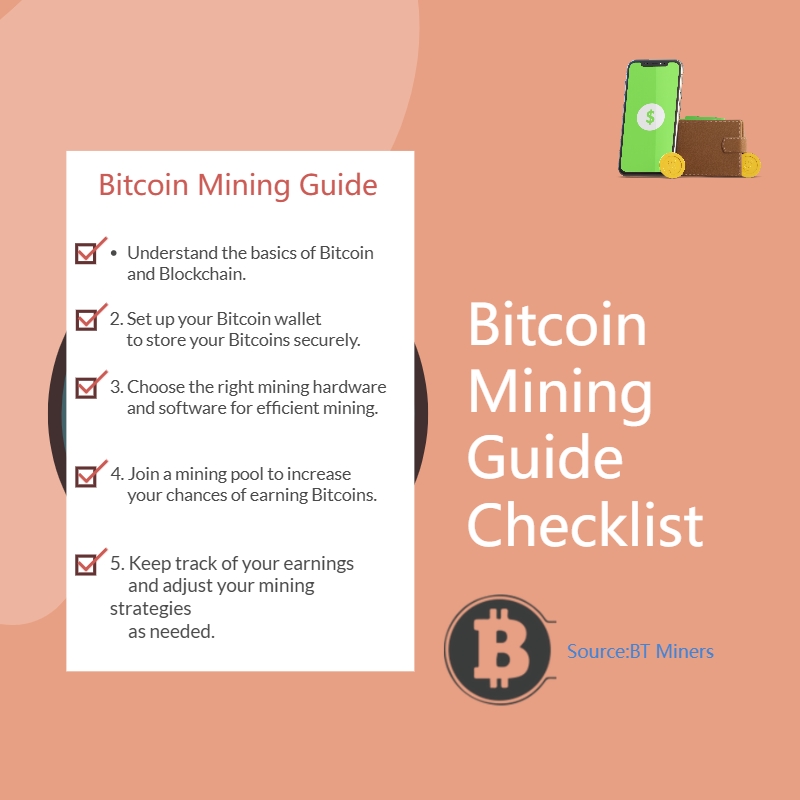
Which Mining Pool To Pick For Crypto Beginners?
When choosing a mining pool to join, there are several important factors to consider. First, look at the pool size and hash rate. Larger pools have more consistent rewards but you will get a smaller share due to more competition. Check the pool’s reputation and security—make sure it has a good track record and two-factor authentication. Also, check the fees and payout methods to see what fits you. Another key Make sure the pool supports the coin you want to mine. A user-friendly interface and good support are important, especially for beginners. Finally, choose a pool with high stability and minimal downtime to maximize your earnings. Some good pools to look into are ViaBTC, F2Pool, and Antpool which have good reputations and stand against the test of time in the mining community.
The Future Outlook Of Bitcoin Price
Bitcoin prices in 2024 and 2025 are expected to remain highly volatile, influenced by evolving regulations and policies. Since the start of 2024, the price has surged from $30,000 to $98,000. With President Trump in office and his proposed cryptocurrency-friendly policies, market sentiment is optimistic, projecting Bitcoin to exceed $120,000 by 2025. Bitcoin’s volatility will persist through 2024 and 2025, driven by macroeconomic trends, regulations, and institutional interest. For miners, price surges can mean higher profits, while a sharp decline can trigger a drop in revenue. To stay ahead, miners should actively monitor the market and adopt risk management strategies, such as setting a target sale price.
Conclusion
As the cryptocurrency landscape continues to transform, the future of Bitcoin mining holds crucial implications. Navigating the dynamic change in technology, market forces, and regulations will be essential for success in Bitcoin mining. For beginner Bitcoin investors, it is important to carefully consider your risk tolerance and conduct thorough research before investing in Bitcoin or any other cryptocurrency. While Bitcoin faces limitations and its future as a daily currency remains uncertain, blockchain technology is poised to significantly influence financial systems moving forward.



